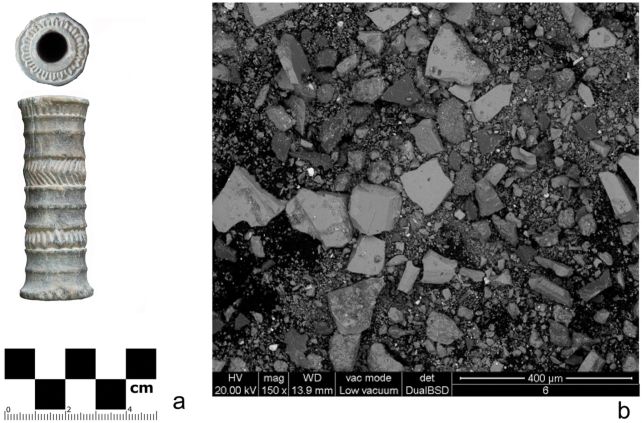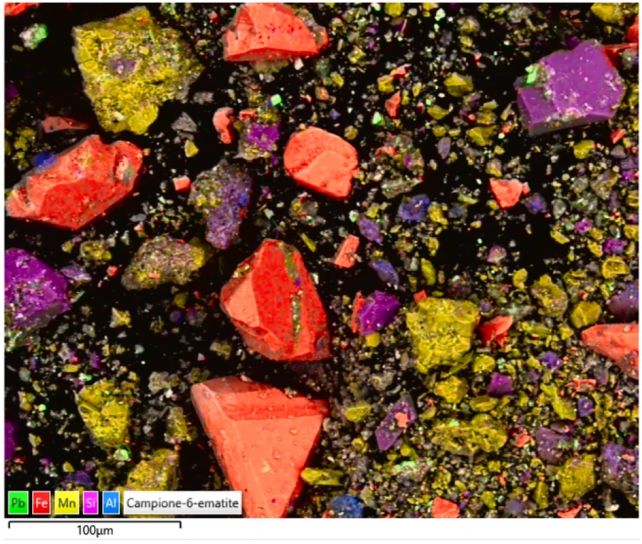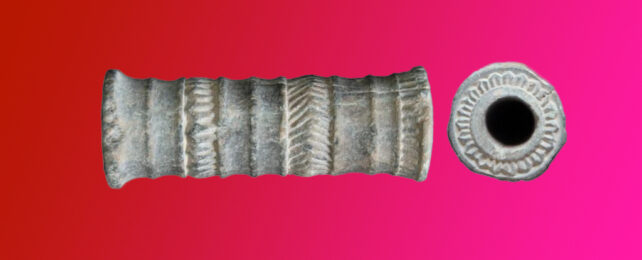A small, tube-shaped stone container discovered in Iran seems to have once encased a bright red pigment similar to lipstick.
Analysis of traces left inside the container show ingredients that are remarkably close to the ingredients in lip pigments used today. It is, scientists say, probably the earliest known example of the use of lip paint by humans.
The ancient lipstick appears indicative of a culture advanced enough for the knowledge of metallurgy and chemistry required to develop such innovations.
"The deep red cosmetic," writes a team of archaeologists led by Nasir Eskandari of the University of Tehran, "is compatible with a lips coloring preparation – probably the earliest so far analytically reported – and enriches the range of cosmetic practices within the chalcolithic-Bronze Age."
Cosmetic adornment actually has a fairly long history, and we have the receipts. Kohl eyeliner, for example, has been worn for thousands of years, and other cosmetics such as eyeshadows and foundations, have been identified from ancient Egypt and the Near East, as well as parts of Asia. We even have analyses that reveal the formulas for these ancient cosmetics.
We know somewhat less about lip pigment. We don't know when or where its use started, and we don't know how it was prepared. So this tiny little artifact has big implications.

"The scarce attention paid to this ancient Bronze Age industry, I believe, is due to the fact that it has been considered a secondary 'women's matter,'" archaeologist Massimo Vidale of the University of Padua in Italy told Smithsonian Magazine.
"In contrast, it was a costly expression of luxury that played a crucial role in shaping social interaction in the hierarchies of the early cities."
It's a small vial beautifully carved from a green-tinged stone called chlorite, recovered from southeastern Iran in 2001 after the Halil river broke its banks and flooded several Chalcolithic graveyards. Thousands of artifacts were lost to looting, but the tube was recovered and made its way to the Archaeology Museum of Jiroft, where it has remained safely since.
Although its material and style are consistent with other chlorite artifacts consistent with the ancient Marḫaši culture, its size and shape, the researchers noticed, were highly unusual. So they decided to conduct a thorough analysis to see if they could figure out what it was.
Inside, they found a small amount of fine, loose, dark purple-hued powder. This powder was subjected to a range of analytical techniques, including scanning electron microscopy, X-ray powder diffraction, high-performance liquid chromatography-mass spectrometry, and radiocarbon dating.
Although soil contamination cannot be ruled out, the results suggest that this was minimal. The sample was found to date to the early 2nd millennium BCE, around 4,000 years ago. And the contents of the sample were extremely interesting.
The dominant ingredient was hematite. Hematite is often black in its stone form; however, grind it up and it can become a brilliant rich, red powder. Other ingredients include quartz, clinochlore, braunite, manganite, and galena, which was a common ingredient in ancient kohl.
Additionally, the researchers found vegetable waxes and oils, similar to modern lipstick. The proportion of lead-based minerals, the researchers saw, was minimal.

This, the researchers believe, points to lip paint, enhanced by the size and shape of the stone tube. It could, they note, be easily held in one hand, while an applicator is used with the other hand. It's a shame that the artifact wasn't found in its burial context, where it could have been linked to a specific individual or social group.
Even so, the cosmetic can tell us a lot about the people who made it, so many millennia ago.
"This discovery reveals that Iranian artisans from 5,000-4,000 years ago had already developed a very advanced knowledge on metallic, natural, and synthetic compounds that could produce not only of black kohl eyeliner, white lead face foundation, but much more," Vidale says.
"Now to add to this is the newly discovered lip paint. The minimal traces of lead minerals suggests that such artisans understood the dangers of direct ingestion of lead. It also suggests the possibility that cosmetics were used in formal and ceremonial social contexts, as an important component of the public manifestation of the dominant role of an elite stratum of the population."
The research has been published in Scientific Reports.
